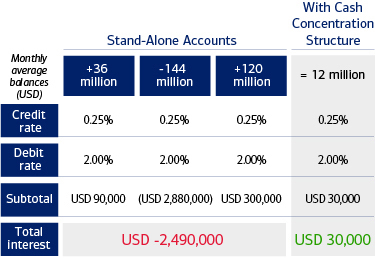With long-term transformational undertakings like this, setting expectations and assembling a cross-functional team from the outset is essential. This team will need to extend beyond treasury into finance, accounting, tax, IT and legal departments. While liquidity structure projects will look different for each treasury organization, there are some key steps you can take to make the process easier.
A well-implemented cash consolidation initiative could:
- Drive tax efficiencies and savings.
- Reduce intercompany loan reconciliation.
- Reduce interest expense through faster repayment of debt.
- Eliminate manual work for cash management teams.
- Automate journal entries for accounting teams.





